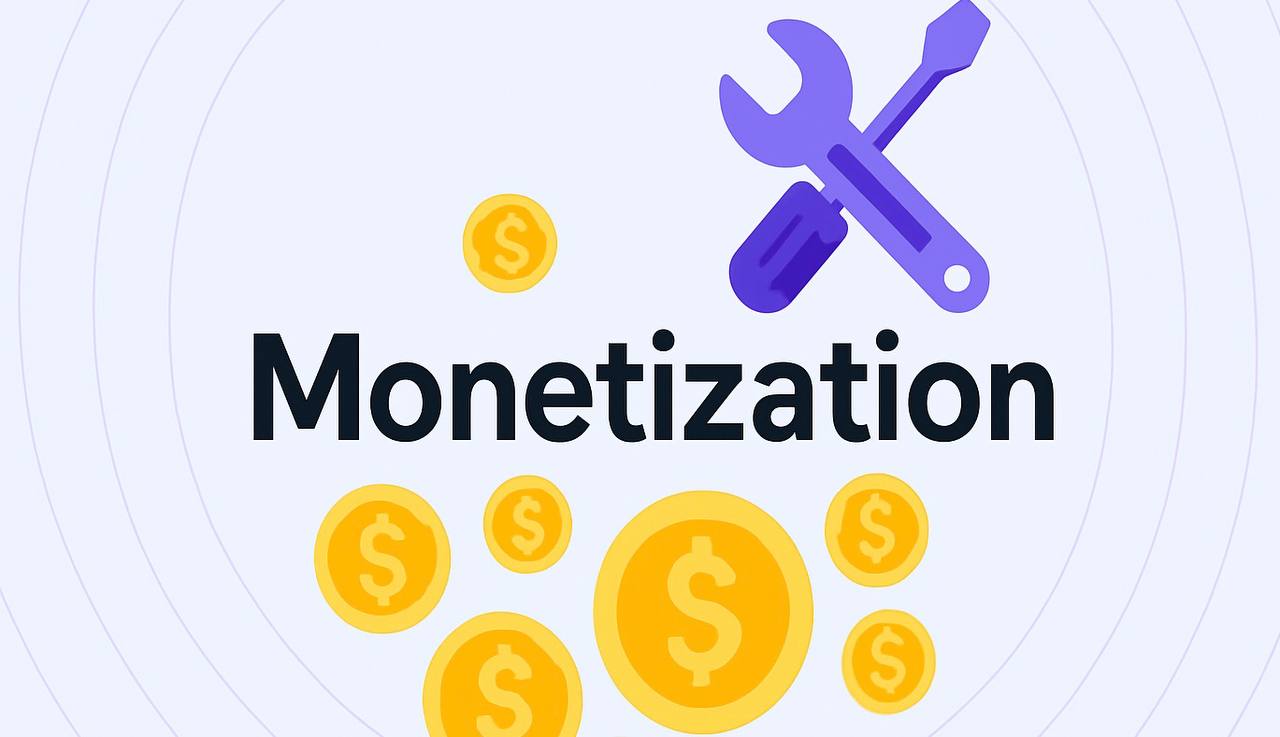Selecting effective monetization tools for developers has become increasingly complex. With Google Play’s 2025 ad transparency policies and DMA-related restrictions, conventional ad-based approaches expose developers to compliance risk, reputational liability, and mounting technical debt. What was once a simple choice between banners, interstitials, and rewarded video is now a minefield of consent forms, SDK declarations, and user tracking constraints. As a result, SDK-based monetization has emerged as a strategic alternative: a seamless, silent revenue channel that aligns with evolving regulatory frameworks while preserving or even enhancing core monetization metrics such as ARPDAU (average revenue per daily active user), LTV (lifetime value), and eCPM (effective cost per mille).
This article presents a structured overview of how developers can evaluate, integrate, and scale SDK-based monetization in a post-2025 compliance landscape. Through a seven-stage methodology—spanning audience analysis, monetization model selection, SDK integration, technical validation, analytics configuration, ARPU uplift, and global scaling—we show how privacy-aligned background monetization can outperform legacy ad networks. We also examine the role of Infatica SDK and how its peer-to-business model delivers performance lift with negligible resource cost. Common objections from developers—such as fears around performance impact, battery drain, and user consent—are also addressed in detail. Real-world metrics from a live game deployment are included, along with a compliance checklist reflecting Google Play’s current requirements.
The Problem, Benefits, and Methodological Flow
The monetization landscape has changed dramatically over the last 24 months. Developers marketing Android apps now face multifaceted regulatory pressures and platform constraints. Google’s Ads Transparency Center—updated in April 2025—mandates that developers disclose not only the presence of ads but the identity of all monetization partners involved in delivering them. This includes any upstream advertisers, exchanges, and programmatic intermediaries. The European Union’s Digital Markets Act further enforces this visibility by imposing pre-consent requirements and obligations to allow users to reject or withdraw participation in monetization flows without feature loss.
SDK-based monetization models effectively sidestep many of these constraints. By delivering monetization through non-advertising channels—such as encrypted background data transport, compute exchange, or bandwidth-sharing—they remain outside the formal scope of ad policy enforcement, yet still drive incremental revenue. When implemented correctly, SDKs can function entirely in the background without altering UX or relying on behavioral data. A well-designed SDK should remain below 1 MB in binary size, comply out-of-the-box with GDPR, CCPA, and LGPD, and offer runtime toggles for user consent, analytics suppression, and telemetry minimization. These attributes now represent best practices when selecting tools for sustainable monetization.
The seven-stage methodology employed by high-performing apps begins with a cohort-level audience analysis, followed by monetization model selection that balances policy exposure with expected ARPU. SDK integration must be modular and fail-safe—monetization logic should never run before explicit consent. Testing includes power, CPU, RAM, and thermal benchmarks. Only after performance assurance should analytics be configured, ideally with isolated Sub-ID or hashed cohort support. Uplift modeling then compares baseline monetization to SDK-enabled flows. The final stage—scaling—requires jurisdictional toggles, UI localization, and signed manifest declarations to ensure policy compliance across global stores.
Google Play 2025 Compliance Context and Checklist
By mid‑2025, Google Play began active enforcement of the revised Ads Transparency policy. This includes mandatory disclosure of all ad payers, the SDKs they use, and any associated data processing. Violations may result in policy rejections, temporary suspensions, or delisting. SDK-based passive monetization models, when properly disclosed and structured outside the advertising stack, offer a strategic compliance buffer. They enable monetization without ad impressions, thereby reducing both regulatory scope and policy friction.
A minimum-compliance SDK integration must meet several criteria. First, it must defer execution until consent is recorded and stored in a verifiable format. Second, it must offer a permissions-light manifest with no extraneous access requests. Third, it must implement signed-update delivery to ensure SDK upgrades are traceable. Fourth, resource utilization should remain below 1% CPU and RAM, with battery impact below telemetry detection thresholds. Finally, developers must declare all monetization components in the Play Console’s Data Safety section and provide revocable consent pathways.
How Infatica SDK Addresses These Challenges
Infatica SDK implements a silent, GDPR-compliant peer-to-business monetization model based on secure background traffic routing. It monetizes consenting users without showing ads, requiring login, or accessing personal data. The SDK architecture includes a Sub-ID framework that enables cohort-based LTV attribution without violating anonymity or triggering ad policy requirements. Sub-IDs are hashed and segmented, ensuring that revenue data can be linked to user journeys without identity exposure.
With a binary size of under 1 MB, the SDK is lightweight and platform-agnostic. Auto-updates ensure alignment with platform changes, and it includes built-in failover logic if consent is revoked. Developers can choose between revenue-share and flat-fee licensing models. Crucially, analytics dashboards present SDK-derived revenue independently of ad stack metrics, enabling clear visibility for finance and product teams.
Compared to similar SDKs—such as Honeygain (3–5 MB with ~4% battery load) and Proxyrack (~4 MB with known latency)—Infatica maintains a smaller footprint and consistently low system impact. Real-world measurements place CPU and RAM consumption below 1%, with battery impact often falling below OS-level detection thresholds. Honeygain lacks Sub-ID-level LTV tracking, while Proxyrack suffers from limited consent customization and lacks UI localization support. Infatica is the only reviewed SDK in this category to offer full consent automation, sub-1% resource load, 100% opt-in monetization eligibility, and granular per-cohort reporting.
Case Study: Puzzle Game Integration & AppsFlyer Forecasts

In Q2 2025, a casual puzzle game targeting Android and Chrome browser environments integrated Infatica SDK into production. The app maintained 50,000 daily active users (DAU) and previously relied on traditional ad monetization. QA engineers validated that SDK integration added no more than 0.8% CPU and 0.6% RAM load under peak usage. Battery impact remained undetectable over 6-hour session simulations on mid-range Android devices.
Financial results were immediate. ARPDAU rose from €0.12 to €0.18, marking a 50% increase in average daily revenue per user without introducing any ads or additional user friction. Lifetime value over 30-day cohorts increased from €2.50 to €3.60. The projected eCPM, factoring total monetization per 1000 DAUs, reached €6.50—on par with mid-tier interstitial campaigns, but with no visual ad inventory and no interruption to gameplay.
According to AppsFlyer’s 2025 Monetization Outlook, ARPDAU for casual games is expected to reach €0.20 by late 2025, with top-performing hybrid monetization apps achieving €4.50 in LTV. SDKs like Infatica are highlighted as emerging channels for incremental yield.
Addressing Developer Skepticism: Performance, Battery, Privacy
Developer hesitation around SDK-based monetization typically falls into three categories: performance impact, battery consumption, and privacy risk. Infatica SDK addresses each of these with quantifiable metrics and design-first solutions.
Performance overhead is minimized through an event-driven architecture that runs only after runtime checks confirm user consent and device eligibility. The SDK executes asynchronously and avoids synchronous blocking calls or memory locks. Extensive lab testing confirms CPU use stays under 1%, and memory allocation is within a 2–5 MB envelope, which is effectively negligible on modern mobile devices.
Battery impact is even more favorable. Infatica avoids background polling, foreground services, or persistent notifications. It operates as a short-lived process, triggered under specific network conditions and user states. As a result, power drain remains well under 1%, even during prolonged usage or multitasking.
Privacy is ensured through a zero-PII architecture. No identifiers, IP addresses, or behavioral data are stored or shared. Consent is obtained via a customizable UI component that supports localization and dynamic opt-in text. Users can revoke consent at any time, triggering an instant SDK deactivation and event log. Sub-ID-based analytics ensure that no personally attributable insights are generated, aligning with GDPR’s principles of data minimization and lawful processing.
Final Considerations
The combination of legal enforcement, policy hardening, and user expectation has made consent-first monetization not only viable but necessary. SDKs like Infatica represent a forward-compatible solution that enables sustainable revenue growth without friction, visibility loss, or regulatory exposure. Developers who adopt such tools now position themselves at the convergence of privacy, performance, and profitability.
Further Reading & References
External:
Conclusion
Silent SDKs, especially peer-to-business models, are redefining monetization in the age of consent, regulation, and performance sensitivity. Infatica SDK is a scalable, compliant, and analytics-driven option that unlocks background monetization without compromising UX.
Ready to explore integration? Learn more about Infatica SDK →
